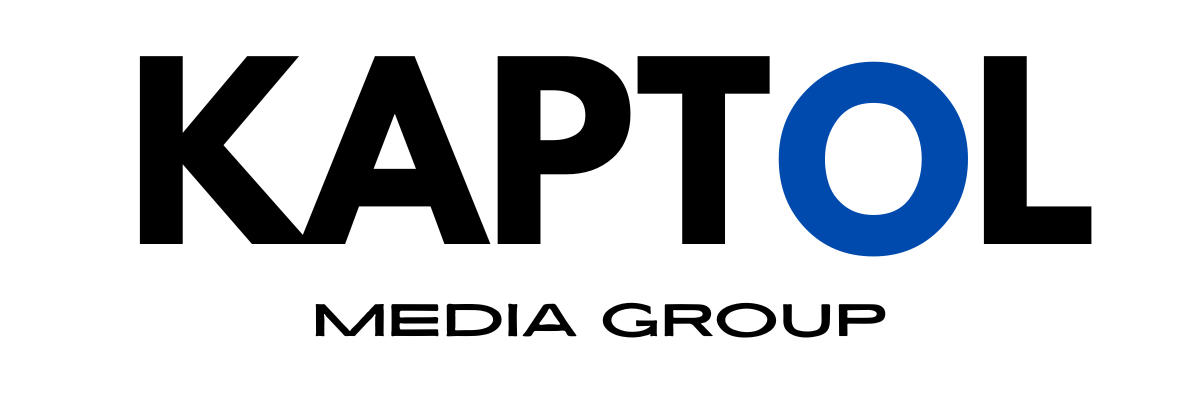5 More Challenges of Digital Marketing
Here's a few more common challenges faced by businesses when implementing Digital Marketing.

In today’s modern digital landscape, businesses face a range of challenges to leverage the potential of digital media.
From the massive volume of online content to the increasing pace of technological advancements, here are some more areas which are crucial for any business aiming to succeed in digital media.
1.Resource Allocation
The Challenge of Resource Allocation
For many businesses, particularly small and medium-sized enterprises, efficiently allocating resources across various digital media channels presents a significant challenge.
Each platform offers unique benefits and reaches different audiences, making it difficult to decide where to invest time and money for the best return. Furthermore, the digital landscape is constantly evolving, requiring businesses to adapt and sometimes shift their resource allocation to keep up with new opportunities and changes in consumer behaviour.
Strategies for Effective Resource Allocation
- Define Clear Objectives and Goals: Before allocating resources, it’s essential for businesses to have a clear understanding of their marketing objectives. Are you looking to increase brand awareness, drive sales, or perhaps improve customer loyalty? Setting specific, measurable goals helps determine which channels are most likely to help achieve these objectives.
- Understand Your Audience: Knowing where your target audience spends their time online is crucial. Different demographics tend to favor different platforms. For instance, younger audiences may be more reachable on Instagram or TikTok, whereas a professional audience may be more engaged on LinkedIn. Investing resources into platforms where your audience is most active will likely yield better results.
- Perform a Channel Audit: Evaluate the performance of current channels where your business is active. Look at metrics like engagement rate, conversion rate, and cost per acquisition. This data can help identify which channels are performing well and which are not, guiding where to invest more and where to cut back.
- Consider the Content Type: Different digital media channels require different types of content. For example, YouTube needs high-quality video content, which can be more costly and time-consuming to produce than images for Instagram or text updates for Twitter. Understanding the resource implications of content creation for each channel can help in making informed decisions about where to allocate budgets.
- Leverage Automation Tools: Automation tools can help streamline processes and reduce labour costs. For example, tools that automate posting schedules, customer interactions, or ad campaigns can free up resources that can be redirected to more strategic activities.
- Test and Learn: Not all investments will pay off as expected, and digital media is no exception. Adopting a test-and-learn approach allows businesses to experiment with different strategies on a smaller scale before fully committing resources. This approach can help minimise losses from less effective channels and strategies.
- Focus on ROI: When resources are limited, prioritising investments that offer the highest potential return on investment is crucial. This may mean prioritising paid advertising on a platform that drives sales directly over more costly brand-building campaigns in less proven channels.
- Stay Flexible and Responsive: The digital landscape can change rapidly, so it's important to remain flexible and be prepared to shift resources as needed. Regularly revisiting and revising the digital strategy will help ensure that the resource allocation continues to align with business goals and market conditions.
Resource allocation in digital media is not a set-it-and-forget-it strategy.
It requires ongoing assessment and adjustment based on performance data, changes in consumer behaviour, and advancements in technology.
By strategically managing your resources, you can maximise the impact of your digital media efforts, even with limited budgets. This strategic approach ensures that every dollar and hour spent moves the company closer to achieving its objectives, maintaining competitiveness in the ever-evolving digital arena.
2.Security and Privacy
The Growing Importance of Security and Privacy
In today's digital landscape, businesses face significant risks associated with data breaches and privacy violations, which can lead to severe financial penalties and damage to brand reputation.
With the increasing amount of customer data collected through digital channels, the responsibility to secure and use this data ethically is more critical than ever. Compliance with evolving privacy regulations is mandatory for businesses operating in Australia and across international borders.
Strategies for Managing Security and Privacy in Digital Media
- Understand Applicable Regulations: The first step in managing security and privacy is to understand the legal requirements applicable to your business. This may vary depending on the geographic locations of your customers. Consulting with legal experts to ensure compliance with all relevant laws and regulations is crucial.
- Implement Robust Data Protection Measures: Businesses must adopt strong security protocols to protect customer data from unauthorised access and breaches. This includes using encryption for data at rest and in transit, employing secure coding practices, regularly updating and patching software, and using reputable security solutions.
- Conduct Regular Security Audits and Assessments: Regularly auditing your digital security measures can help identify vulnerabilities before they are exploited. Penetration testing, vulnerability assessments, and compliance audits are essential practices that help ensure continuous protection.
- Develop a Comprehensive Privacy Policy: A clear and transparent privacy policy that outlines how customer data is collected, used, and protected, helps build trust with customers. This policy should be easily accessible and written in clear language. It should also be updated regularly to reflect any changes in business practices or compliance requirements.
- Train Employees on Data Security and Privacy: Human error is a significant factor in many data breaches. Providing regular training for employees on the importance of data security, how to recognise phishing attacks, and the correct handling of customer data is essential.
- Limit Data Access: Access to sensitive data should be restricted to only those employees who need it to perform their job duties. Implementing access controls and regularly reviewing access permissions can reduce the risk of internal data breaches.
- Encourage Strong Data Hygiene Practices: Beyond restricting access, encouraging practices such as regular password changes, using multi-factor authentication, and educating employees on the importance of data hygiene can significantly enhance security.
- Prepare for Data Breaches: Even with robust protections in place, breaches can occur. Having an incident response plan that includes immediate actions to secure data, communicate with stakeholders, and comply with legal requirements for breach notification is critical.
- Adopt Privacy by Design: When developing new products, services, or digital marketing strategies, incorporating privacy by design and by default principles can ensure that privacy considerations are integrated at every stage of development.
As digital media continues to evolve, so do the challenges related to security and privacy.
By implementing strong security measures, staying informed about legal requirements, and fostering a culture of privacy and security awareness within the organisation, businesses can protect themselves and their customers from the risks associated with digital operations.
This not only helps in compliance with regulations but also strengthens customer trust and loyalty, which are invaluable assets in the digital economy.

3.Adapting to Technological Changes
The Challenge of Rapid Technological Advancements
The digital landscape is continually evolving, with new technologies emerging at a rapid pace.
Innovations such as artificial intelligence (AI), virtual reality (VR), augmented reality (AR), and continually updating social media features can significantly alter consumer behaviours and market dynamics.
For businesses, keeping up with these changes is not just about staying relevant; it's about capitalising on new opportunities for engagement, efficiency, and competitive advantage.
Strategies for Keeping Up with Technological Changes
- Invest in Continuous Learning: One of the most effective ways to keep up with technological changes is to foster a culture of continuous learning within your organisation. This can involve regular training sessions, subscriptions to relevant industry publications, attending webinars, and conferences. Investing in employee education not only keeps your team informed but also motivated and capable of leveraging new technologies.
- Participate in Industry Associations and Forums: Engaging with industry associations and forums can provide insights into how similar businesses are adapting to new technologies. These platforms offer a valuable exchange of ideas and can alert businesses to changes on the horizon before they become mainstream.
- Collaborate with Technology Partners: Developing relationships with technology providers and consulting firms can help businesses stay ahead of the curve. These partners can provide early access to new tools and technologies, giving businesses a head start in implementing changes that can benefit their operations and marketing strategies.
- Adopt a Flexible Infrastructure: Technology-friendly infrastructures that can easily integrate new tools and platforms as they emerge are crucial. This might involve cloud-based solutions, modular software architectures, and APIs that allow for seamless updates and scalability without disrupting existing operations.
- Monitor and Test Emerging Technologies: Keeping an eye on emerging technologies and conducting pilot projects can determine their potential impact without committing significant resources. For example, experimenting with AI for customer service chatbots or using VR for virtual tours can provide practical insights into whether these technologies can enhance your business offerings.
- Implement Agile Methodologies: Agile methodologies, which involve iterative development and continuous feedback, are ideal for environments where rapid adaptation is necessary. These practices allow you to quickly adjust your strategies and operations in response to new technological advancements.
- Focus on Consumer Needs and Preferences: While it's important to keep up with technology, it's critical to align these advancements with consumer needs and preferences. Regularly gathering customer feedback on their experience with new technologies can help you refine your digital strategies to better serve your audience.
- Stay Informed About Industry Trends: Utilise industry reports, case studies, and trend analyses provided by market research firms to stay informed about the latest developments in technology. These resources can help predict which trends might be beneficial or disruptive to your industry.
Adapting to technological changes in digital media requires a proactive approach and a willingness to invest in learning and development.
By embracing a culture that values agility, continuous improvement, and customer-centric innovation, you can not only keep up with technological advancements but also potentially lead the way in you industry. This adaptability not only drives growth but also enhances the resilience of your business against the fast-paced changes inherent in the digital world.
4.Engagement and Interaction
The Challenge of Achieving Meaningful Engagement
In the digital media environment, where users are inundated with content and advertisements, capturing and maintaining audience engagement is increasingly challenging.
Engagement is not just about attracting clicks or views; it's about fostering genuine interaction that builds relationships and drives conversions.
For you, this means not only standing out in a crowded space but also connecting in a way that resonates deeply with your audience.
Strategies for Enhancing Engagement and Interaction
- Create Valuable and Relevant Content: At the heart of engagement is content that provides value to the audience. This could be educational, entertaining, informative, or even inspirational content that addresses the needs and interests of your target demographic. Tailoring content to answer the questions or solve the problems your audience may have can boost engagement significantly.
- Utilise Interactive Content Formats: Interactive content such as polls, quizzes, surveys, interactive videos, and AR experiences can greatly increase user engagement by making the content consumption experience active rather than passive. These formats encourage users to participate and can provide valuable feedback and data to the business.
- Leverage Personalisation: Personalising content and interactions based on user behaviour and preferences can significantly enhance engagement. Using data analytics to tailor the content, timing, and format to match the preferences of individual users shows that the brand pays attention to its audience’s needs, thereby fostering a stronger connection.
- Encourage User-Generated Content: Inviting users to create content related to your brand, whether through contests, hashtags, or community challenges, can boost engagement. User-generated content not only provides authenticity but also encourages more profound interaction among the community members themselves.
- Optimise for Mobile Interaction: With the increasing prevalence of mobile device usage, ensuring that digital content is optimised for mobile is crucial. This means fast loading times, mobile-friendly formats, and touch-friendly interfaces that enhance the user experience and encourage interaction.
- Implement a Robust Community Management Strategy: Engagement doesn’t end at content creation. Responding to comments, messages, and posts quickly and in a manner that aligns with the brand’s voice can create a sense of community and belonging among users, which is key to sustaining long-term engagement.
- Use Storytelling Techniques: Stories are a powerful way to connect emotionally with audiences. Crafting narratives that incorporate your brand’s values and message can draw users in and make the engagement more meaningful, beyond the superficial level.
- Analyze and Adapt Based on Engagement Metrics: Regular analysis of engagement metrics can provide insights into what types of content and interaction strategies are working or not. Tools that track user interactions, time spent on content, sharing rates, and conversion metrics can help refine engagement strategies over time.
- Experiment with Timing and Frequency: The timing and frequency of content posting can also affect engagement. Experimenting with different schedules to determine when your audience is most active and responsive can help optimise engagement rates.
Driving meaningful engagement and interaction in digital media requires a strategic and creative approach that goes beyond merely capturing attention.
By focusing on creating valuable, relevant, and interactive content, personalising interactions, and actively managing community engagement, you can foster deeper relationships with your audience.
This not only enhances brand loyalty but also increases the overall effectiveness of digital marketing efforts in a cluttered media landscape.

5.Crisis Management
The Challenge of Digital Crisis Management
In the digital age, information spreads faster than ever before, and a brand's reputation can be significantly impacted by how effectively it manages crises.
Negative feedback, misinformation, or a misstep in communications can quickly spiral into a full-blown crisis if not handled promptly and appropriately.
The stakes are high in digital media, where public perception can shift rapidly and where every response (or lack thereof) can be scrutinised by a global audience.
Strategies for Effective Crisis Management in Digital Media
- Develop a Crisis Management Plan: Preparation is key to effective crisis management. You should have a comprehensive crisis management plan that includes predefined protocols for different types of crises, from product recalls to PR scandals. This plan should outline the steps to take, who is responsible for what, and how to communicate both internally and externally.
- Monitor Digital Channels Constantly: Constant monitoring of social media and other digital platforms is essential to quickly identify potential crises. Using social listening tools can help detect negative sentiment or emerging issues before they escalate, allowing you to respond proactively.
- Respond Quickly and Appropriately: Speed is crucial in crisis management, but so is the tone and content of the response. Responses should be timely to prevent rumours from spreading and should convey the right mix of empathy, authority, and action. Each response should be tailored to the nature of the crisis and the concerns of stakeholders.
- Communicate Transparently: During a crisis, transparency is vital. Stakeholders, from customers to employees, appreciate open and honest communication. Detailing what went wrong, what is being done to fix it, and what steps will be taken to prevent future issues can help rebuild trust.
- Utilize the Right Spokespersons: Identifying and training the right people to speak on behalf of the company during a crisis is crucial. These individuals should be well-versed in the company's crisis communication plan and capable of conveying calm, confidence, and competence.
- Coordinate Across All Channels: Ensure that communication is consistent across all channels, from social media to traditional media to internal communications. Discrepancies in messaging can lead to confusion and further damage the brand's reputation.
- Leverage Support Networks: During a crisis, it can be beneficial to mobilise support networks, including loyal customers, industry partners, and influencers, who can help mitigate negative sentiments and disseminate positive messages.
- Evaluate and Learn from the Crisis: After managing a crisis, conduct a thorough review of its handling to identify what worked and what didn’t. This should involve scrutinising the responses at each stage, the effectiveness of the communication channels used, and the overall impact on the brand. Lessons learned should be integrated into the crisis management plan to strengthen future responses.
- Legal Considerations: In certain crises, particularly those involving legal issues, it's important to coordinate responses with legal counsel to avoid making statements that could affect legal outcomes.
Effective crisis management in digital media requires a strategic approach, preparedness, and the ability to act swiftly and decisively under pressure.
By developing a robust crisis management plan, monitoring digital platforms vigilantly, communicating transparently, and learning from each incident, you can manage crises in a way that minimises damage to your reputation and maintains trust with your stakeholders.
This proactive and thoughtful approach to crisis management is crucial in navigating the challenges and dynamics of the digital landscape.









